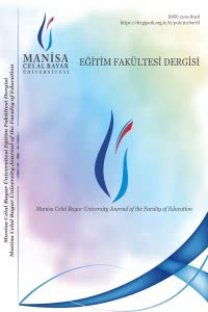Teleskopla Ramazan Hilalini Gözlemlemek Sünnete Aykırı Mıdır?
Ramazan hilalinin tespitinde Türkiye’de teleskop kullanılmadığını biliyoruz. Türkiye’deki sorumlular, astronomi uzmanlarıyla, insan gözü mütehassıslarının verilerini temel alarak, “Hilal ufuk çizgisinden beş derece yukarıda olacak pozisyona gelmedikçe Ramazan orucuna başlanmaz” diyorlar. Buna sebep olarak da Peygamberimiz (s.a.s) zamanında hilalin çıplak gözle gözlemlenmesini gösteriyorlar. Teleskop esas alınsa, hilal beş derecede değil de, belki iki, hatta bir derecede iken görülebilecek. Fakat şer’an teleskopa itibar edilmemesi gerektiği düşüncesiyle, bu yola başvurulmuyor. Bizce hilali teleskopla görmek de çıplak gözle görmek gibidir. İslam hukukunda nasıl gözlükle bir cinayeti görenin şahitliği kabul ediliyorsa, teknolojik imkânlarla hilali görenin şahitliği de kabul edilmelidir. Mademki Peygamberimiz “Hilal görüldüğü için oruç tutun” buyurmuştur, hilalin bir şekilde görülmesi esastır. Teleskopla veya gözlükle hilali gözlemlemek sünnete aykırı olmadığı kanaatindeyiz.
Is Determining The Ramadan Crescent With Telescope Offended Against Traditıon Of Prophet Muhammad?
In determining Ramadan crescent, we know that the telescope is not used in Turkey. Responsible in Turkey, using astronomy experts’ and human eye experts’ data as base are expressing that if the crescent does not rise 5 degrees above the horizon line, you cannot start Ramadan fast. As a reason for this, they state that during Mohammed’s time the crescent was being observed with naked eye. If the telescope grounds on, the crescent will be seen above 2 degrees instead 5 degrees. But with the opinion not trusting telescope, this procedure is not used. For us, seeing the crescent with telescope or naked eye is the same thing. In Islamic law, how one’s testimony who wears glasses is accepted, observing the crescent with technological equipments should be accepted. Seeing that, our Prophet is ordered that since the crescent is seen, you fast; it is true that crescent should be seen in a way. We consider observing the crescent with telescope or glasses is not offended against tradition.
___
- Ahmed bin Hanbel (1981), el- Müsned (1. Baskı), Çağrı Yayınları, İstanbul, cilt: 4.
- Ebu Davud, Eş‟as oğlu Süleyman (1969), Sünen (1. Baskı), Muhammed Ali es-Seyyid Yayınları Humus, cilt: I.
- ed-De‟âs İzzet Ubeyd (1969), Sünen-i Ebi Davud taliki (1. Baskı), Muhammed Ali es- Seyyid Yayınları Humus, cilt: I.
- Haskefi, Hasan oğlu Zenelabidin el-Haskefi (1984), ed-Dürrü‟l-Muhtar fi Şerhi Tenviru‟l-Ebsar (1. Baskı), Kahraman Yayınları, İstanbul, cilt: I.
- İbnü Abidin, Muhammed Emin (1984), , Haşiyetü Reddi‟l-Muhtar(1. Baskı), Kahraman Yayınları, İstanbul, cilt: I.
- İnternet, http://science.nasa.gov/headlines/v2010/08jan_flyingtelescope.htm?list 1066592
- İnternet, http://www.sorularlaislamiyet.com/article/11046/ -hilal-in-ruyeti-ve-ictimai-/ html
- İnternet, http://farukbeser.com/yazı/ramazanın-tespiti-nasıl-olur-10.htm
- İnternet, http://britannica.com/EBchecked/topic/430495/telescope (27.05.2011)
- Köksal, İ. (2008). Ru‟yet-i Hilal Meselesi, Fırat üniversitesi İlahiyat Fakültesi Dergisi, 13(2), 35-54.
- Kur‟an, Casiye Suresi, Ayet 32. Kur‟an, El-Bakara Suresi, Ayet: 187. Kur‟an, El-İsra Suresi, Ayet: 12.
- Kur‟an, El-Müzzemmil Suresi, Ayet: 20. Kur‟an, Er-Rahman Suresi, Ayet: 5.
- Kur‟an, Et-Tevbe Suresi, Ayet: 37. Kur‟an, Yunus Suresi, Ayet: 5.
- Said Nursi (1996), Mektubat (1. Baskı), Envar Neşriyat Yayınları, İstanbul, cilt: 1. s: 470.
- Serahsi, Ebu Sehl oğlu Muhammed (1978), el-Mebsut, (3. Baskı), Dâru‟l-Marife Yayınları, Lübnan, cilt: III.
- Yıldırım, C. (1975). Ramazan Hilali, Diyanet Dergisi, (Sayı 4).
- Zuhayli (1994), İslam Fıkhı Ansiklopedisi (3. Baskı), (Çev. Nurettin Yıldız), Risale Yayınları, Almanya, Cilt III.
- ISSN: 1309-8918
- Başlangıç: 2011
- Yayıncı: MANİSA CELÂL BAYAR ÜNİVERSİTESİ
Sayıdaki Diğer Makaleler
Teleskopla Ramazan Hilalini Gözlemlemek Sünnete Aykırı Mıdır?
Abdulkadir TOKİZ, Fatma ŞAŞMAZ ÖREN
Dünyada ve Türkiye’de Sınıf Yönetimi
Ankara Yerleişim Merkezinin, Çevresindeki Alanlarla Floristik Yönden Karşılaştırılması
Burcu TARIKAHYA, Sadık ERİK, Brol MUTLU
İlköğretim Öğrencilerinin Fen Bilgisinde Öğretmenlerinden Algıladıkları Hedeflerin Araitırılması
